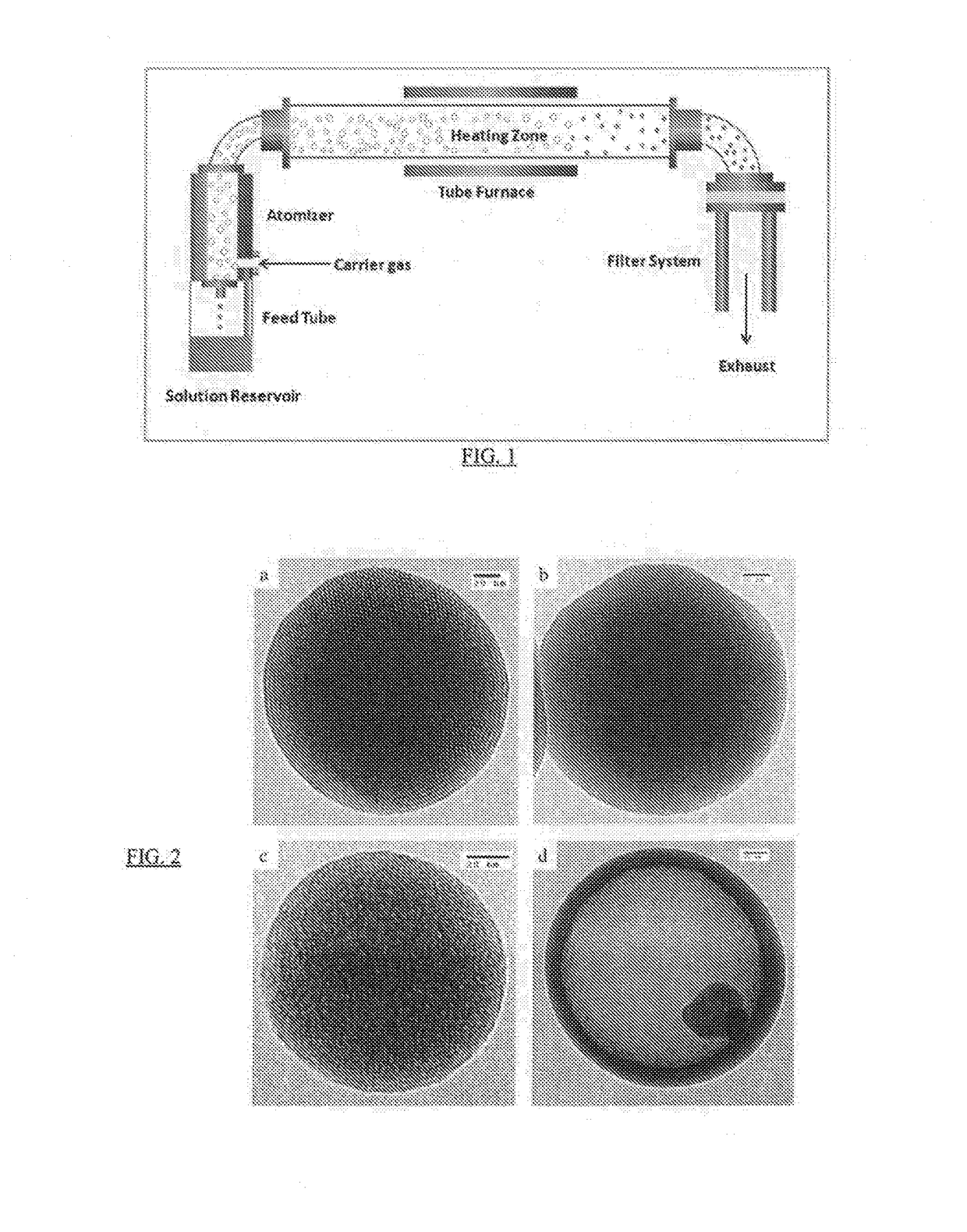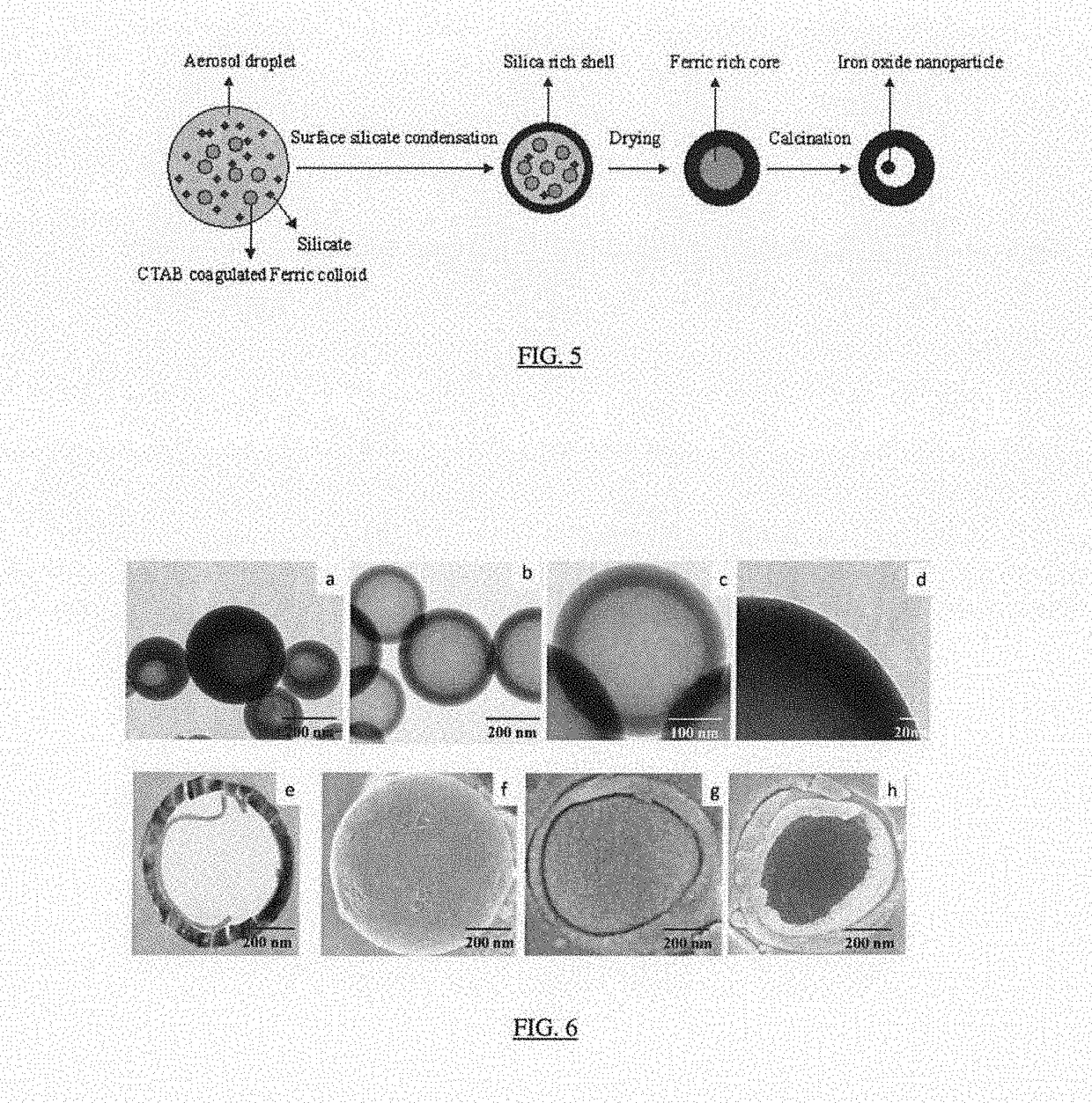Hollow nanoparticles with hybrid double layers
a technology of hollow nanoparticles and hybrid double layers, which is applied in the field of hollow nanoparticles, can solve the problems of reducing the economic value of the material, unable to achieve the templating effect completely, and difficulty in scaling up to commercially viable quantities
- Summary
- Abstract
- Description
- Claims
- Application Information
AI Technical Summary
Benefits of technology
Problems solved by technology
Method used
Image
Examples
example 1
The Development of New Photocatalysts.
[0192]Some embodiments may utilize thin silica shells with an inner backing primarily of titania indicates for photocatalysts with buoyant properties in solution. This has tremendous applications in cleaning and remediation technologies and in the development of dye sensitized solar cells. The photocatalytic activity of each TiO2 sample will be evaluated by the degradation of Rhodamine B in deionized water. The reaction will be carried out in a RPR-100 Rayonet reactor (1.65×108 photons / s / cm3) using emission at 254 nm. In a typical experiment, 10 mg of TiO2 is added to 50 mL of a 1.0 ×10-5 mol·L-1 Rhodamine B solution and magnetically stirred in the dark for 30 min prior to irradiation, to achieve adsorption equilibrium of Rhodamine B with the catalyst. The samples are collected every 20 min by centrifugation to determine the degradation rate by UV-vis adsorption (553.5 nm, Shimadzu UV 1700). Comparisons with the standard photocatalyst (Degussa P...
example 2
The Development of New Classes of Colloidosomes
[0193]Embodiments can be used to solubilize / emulsify mutually immiscible phases forming emulsions that are stable over extended periods. Such surfactant free emulsions, also known as Pickering emulsions, are characterized by the degree of wettability of the particles by either the dispersed phase or the continuous phase as determined by the contact angle (θ), defined as
cosθ=γso-γswγow
where γso, γsw, and γow are the interfacial tensions at the solid-oil, solid-water, and oil-water interfaces, respectively. As a general rule of thumb, hydrophobic particles (θ>90°) preferentially disperse in the oil phase and stabilize water-in-oil emulsions, while hydophilic particles wetted by water (θ<90°) solubilize oil-in-water emulsions. The contact angle of colloidal particles at the interface is analogous to the hydrophilic-lipophilic balance of surfactants, and the value of the contact angle typically determines the nature of the emulsion (oil in ...
PUM
| Property | Measurement | Unit |
|---|---|---|
| thickness | aaaaa | aaaaa |
| thick | aaaaa | aaaaa |
| thick | aaaaa | aaaaa |
Abstract
Description
Claims
Application Information
 Login to View More
Login to View More - R&D
- Intellectual Property
- Life Sciences
- Materials
- Tech Scout
- Unparalleled Data Quality
- Higher Quality Content
- 60% Fewer Hallucinations
Browse by: Latest US Patents, China's latest patents, Technical Efficacy Thesaurus, Application Domain, Technology Topic, Popular Technical Reports.
© 2025 PatSnap. All rights reserved.Legal|Privacy policy|Modern Slavery Act Transparency Statement|Sitemap|About US| Contact US: help@patsnap.com



